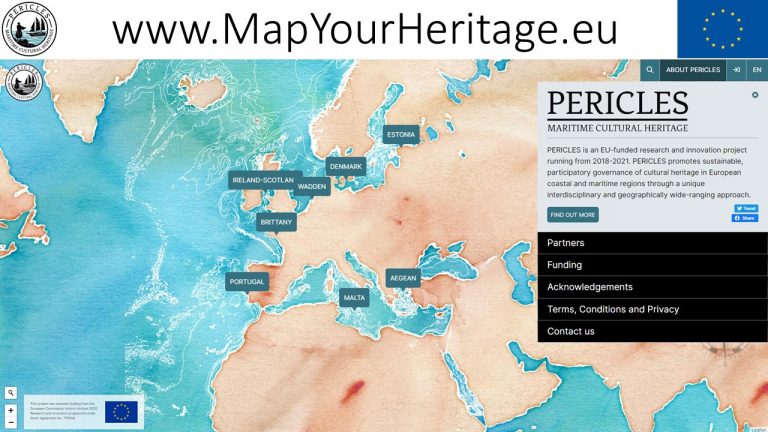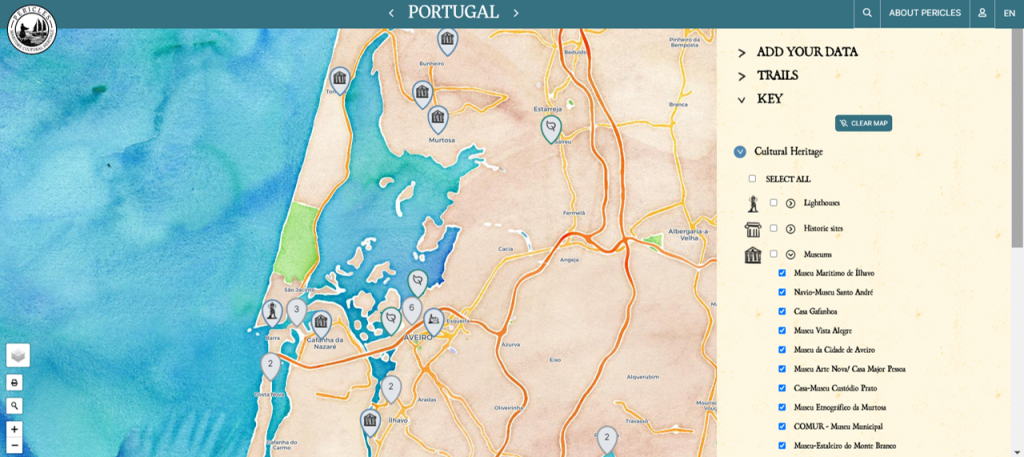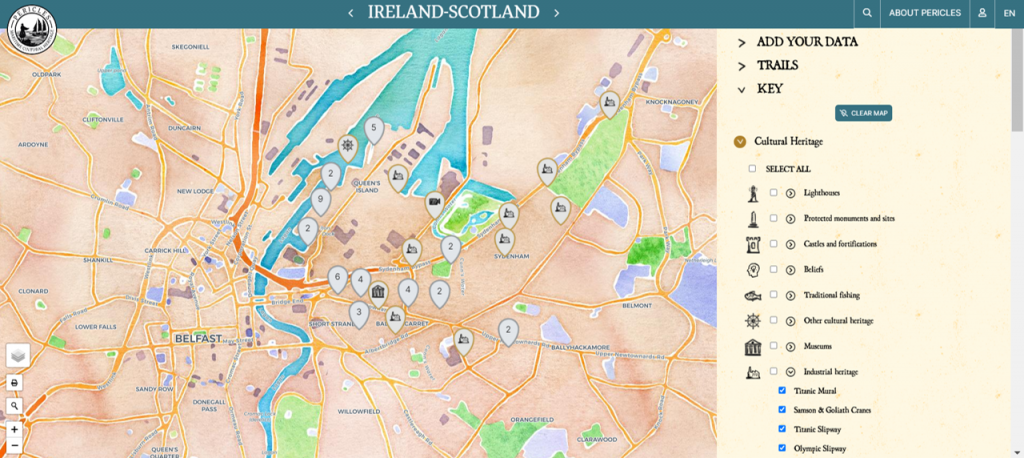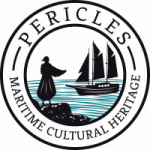
Cultural Heritage Mapping Portal
PERICLES has developed an interactive, online cultural heritage mapping platform. This portal enables data collection and analysis of the distribution of tangible and intangible cultural heritage across our eight European case regions (Aegean Sea, Brittany, Denmark, Estonia, Ireland-Scotland, Malta, Portugal and the Wadden Sea). The aim of the portal is to allow users to better understand cultural heritage, particularly in the way that it is situated within marine and coastal land and seascapes. It provides an opportunity for citizens to engage with cultural heritage in an easily accessible and stimulating format, both as contributors and viewers, plus allowing for analysis of opportunities and threats in a spatially explicit way.
Ultimately the portal provides a platform for the crowd-sourcing, public participation and engagement in cultural heritage data collection, creating new information relating to the location, description, and the human values associated with maritime and coastal cultural heritage across eight case regions in Europe.
The concept of the PERICLES mapping platform was inspired by Sea Stories, an online, interactive cultural map of the sea (2013 and ongoing), an art-science collaboration by Stephen Hurrel (visual artist) and Dr Ruth Brennan (marine social scientist).

What can I do in the portal?
The portal provides a space that enables users to upload photos, videos, sound recordings, and documents relating to a place on the map. Users can drop pins or draw areas to provide locations for their content, along with categories, tags, URL links and open text space to capture descriptions, stories, and values. Users can create and save maps, and customise their view. We have designed create and save trails functions, to enable users to design routes across several locations. The portal is also designed to encourage interaction between users, with the ability to comment on content as well as share items via various social media channels such as Twitter and Facebook. The platform will be multilingual to reflect participation across the case regions (English, Greek, French, Danish, Estonian, Maltese, Portuguese and Dutch).
Find instructions on how to upload data to the portal here
You can also watch the third PERICLES webinar ‘Map Your Heritage: the PERICLES online mapping platform for coastal and maritime cultural heritage’, presented by Sarah Knight of the University of York to learn more here or read the summary from the webinar here.
The PERICLES mapping portal is also an online space where stakeholders and citizens can review and engage with existing data on maritime and coastal natural, industrial and cultural heritage, such as lighthouses, ports, designations of protected areas and windfarms. This existing data, provided through European-wide initiatives such as EMODnet as well as locally managed resources, are seamlessly integrated with newly uploaded content, to provide context and improve visualisation for portal users.
We expect material in the portal to be associated with one or more of the following:
– tangible heritage (e.g. buildings, wrecks, docks)
– places (e.g. a type of landscape, a viewshed)
– practices (e.g. traditional dance, shipbuilding, fishing)
– knowledge and skills (e.g. procedures, recipes, descriptions of embodied knowledge)
– identities (e.g. genealogies, literature, myths and legends, histories and historical events, stories, language and literature)
– institutions (e.g. ways of organising, legal traditions, ways of communal organising, social and cultural values
….and many more!


Discussion group
The Maritime Cultural Heritage discussion group is an additional online space created in the PERICLES project to facilitate engagement and knowledge exchange. Its aim is to bring together interested parties and stakeholders involved in all aspects of maritime cultural heritage, to facilitate discussion, share experiences, opinions and advice, and find commonalities and synergies across our European case regions and beyond.
Facebook is easy to use, discussion tools are readily available, and users can easily share content across many online platforms. Facebook also enables multi-language discussion via its language and translation capabilities so it is a useful platform for this purpose.
